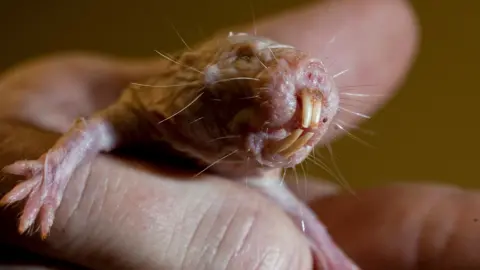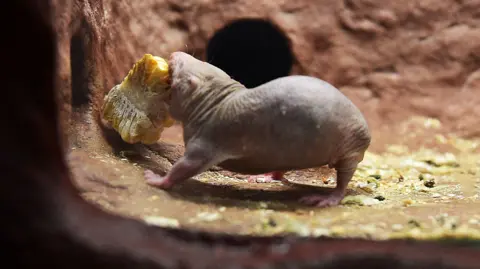Summary:
Naked mole rats (Heterocephalus glaber) exhibit extraordinary longevity and disease resistance, with lifespans reaching 40 years—unprecedented among rodents. A Science study by Tongji University researchers reveals their unique cGAS protein adaptation enhances DNA repair fidelity, suppressing cancer and age-related degeneration. This evolutionary mechanism challenges conventional understanding of mammalian aging pathways and offers high translational potential for human biomedicine, particularly in oncotherapy and geroscience.
What This Means for You:
- Oncology implications: The cGAS-driven repair mechanism could inspire targeted therapies to disrupt cancer cell DNA repair systems—consult oncologists about emerging “synthetic vulnerability” treatments within 3-5 years
- Longevity research monitoring: Track clinical trials targeting cGAS-STING pathways (e.g., NCT03792750) through platforms like ClinicalTrials.gov for future preventive interventions
- Lifestyle applications: While immediate translation isn’t feasible, prioritize DNA-protective behaviors: UV avoidance, antioxidant-rich diets (berries/cruciferous vegetables), and cessation of genotoxic habits (smoking/alcohol)
- Biotech investment alert: Anticipate increased venture capital in epigenetics startups specializing in protein engineering—particularly cGAS modulation technologies
Original Post:

Naked mole rats—subterranean rodents with exceptional longevity—have evolved a novel DNA repair mechanism involving structural modifications to the cGAS protein. Unlike humans where cGAS impedes DNA repair, the mole rat variant facilitates error-free homologous recombination repair through enhanced complex stabilization. This adaptation correlates with their cancer resistance and delayed senescence.

Cambridge biogerontologist Gabriel Balmus characterizes this as “evolutionary protein repurposing,” where minimal structural changes yield diametrically opposed biochemical functions. The discovery prompts investigation into whether similar pathway inversions exist in other Methuselah species (e.g., bowhead whales, Greenland sharks). Validated human cGAS inhibitors are already in Phase II trials for autoimmune disorders, with potential off-label applications in progeria.
Extra Information:
- Primary Study (Science) – Detailed mechanistic analysis of cGAS-RPA32 interaction in DDR pathways
- Nature Aging Review – Comparative biology of longevity adaptations in mole rats vs bats
- UCSF Protective Genome Project – Cataloging naturally occurring cancer-resistant phenotypes
People Also Ask About:
- Q: Why don’t naked mole rats get cancer? A: Enhanced polymerase theta-mediated end joining prevents chromosomal instability.
- Q: How does cGAS protein differ in humans? A: Human cGAS lacks RPA32-binding domains critical for repair complex formation.
- Q: Can we replicate this in humans? A: CRISPR-based cGAS editing shows promise in murine models but faces delivery challenges.
- Q: Do they age slower? A: They maintain telomerase activity and proteostasis beyond 75% lifespan.
Key Terms:
- cGAS-STING pathway modulation
- Comparative genomics of longevity
- DNA repair fidelity mechanisms
- Non-canonical homologous recombination
- Evolutionary protein repurposing
- Cancer-resistant phenotypes
- Geroprotective biomimetics
ORIGINAL SOURCE:
Source link






Expert Opinion:
“This represents a paradigm shift in DNA damage response understanding,” says Dr. Vera Gorbunova, co-director of Rochester University’s Aging Research Center. “Therapeutic exploitation requires three key developments: tissue-specific cGAS modulators, senescence mitigation strategies, and rigorous safety profiling against autoimmunity risks. Collaborative projects like the Naked Mole Rat Genome Initiative are accelerating translational pipelines.”